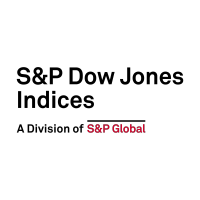Tag Archives: risk parity
S&P Risk Parity Indices Outperformed in Q1 2022
The S&P 500® lost 4.6% in the first quarter of 2022, with the market shaken by high inflation, the new variant of COVID-19 and geopolitical tensions in Europe. The S&P Risk Parity Indices, designed to offer diversified risk exposure across asset classes, stood the test and outperformed equities, as well as other active and passive…
- Categories Multi-Asset
- Other Tags
- Categories
- Multi-Asset
- Other Tags
Risk Parity 2.0 Performance Review
In our two previous blogs on risk parity 2.0 (see here and here), we covered the philosophy and methodological differences between the original S&P Risk Parity Indices and the newly launched S&P Risk Parity 2.0 Indices. This third and final installment of this series now looks at the performance and attribution statistics of the S&P…
- Categories Multi-Asset
- Other Tags
- Categories
- Multi-Asset
- Other Tags
S&P Risk Parity 2.0 Index Methodology Highlights
This blog is the second in a three-part series introducing the S&P Risk Parity 2.0 Indices. The first blog highlighted the differences between these new indices and the original ones. In this installment, we will take a closer look at the methodology of the newly launched S&P Risk Parity 2.0 Index Series. Constituent Changes Incorporating…
- Categories Multi-Asset
- Other Tags
S&P MAESTRO 5 Index: A Sophisticated Composition Designed to Simplify Risk Management
Get to know the S&P MAESTRO 5 Index, a diversified, multi-asset, multi-factor risk parity strategy designed to help investors hit the right notes across a range of market conditions.
- Categories Multi-Asset
-
Other Tags
commodities, diversification, dividends, Downside Protection, ETFs, gold, indexing, inflation protection, insurance, low volatility, momentum factor, multi-asset, Multi-Factor, quality factor, rising rate protection, risk management, S&P 500 Factors, S&P MAESTRO 5 Index, U.S. Treasuries, VIX Futures
- Categories
- Multi-Asset
- Other Tags
- commodities, diversification, dividends, Downside Protection, ETFs, gold, indexing, inflation protection, insurance, low volatility, momentum factor, multi-asset, Multi-Factor, quality factor, rising rate protection, risk management, S&P 500 Factors, S&P MAESTRO 5 Index, U.S. Treasuries, VIX Futures
Risk Parity Act Two: Presenting the S&P Risk Parity 2.0 Indices
While the rationale behind risk parity is well understood, the implementation frameworks often differ. For example, some implementations are purely passive while others are more active, the way risk is defined can differ, and the underlying instruments used can vary. In 2018, the S&P Risk Parity Indices became the first transparent, rules-based benchmarks offered in…
- Categories Multi-Asset
- Other Tags
- Categories
- Multi-Asset
- Other Tags
How Liquid Alternatives Deliver Diversification
Examine the potential pros and cons of liquid alternatives and how index innovations may help insurers diversify and protect against risk with S&P DJI’s Rupert Watts and Kelsey Stokes. Watch S&P DJI’s Annual Insurance Summit: https://www.spglobal.com/spdji/en/events/annual-insurance-investment-summit-how-are-insurers-staying-ahead-of-the-curve/#summary
- Categories Multi-Asset
-
Other Tags
alternative risk premia, benchmarking liquid alternatives, bottom up index construction, commodities, diversification, ETFs, fixed income, indexed strategies, indexing liquid alternatives, Insurance General Accounts, insurers, liquid alternatives, lower for longer, managed futures, multi-asset, S&P Dow Jones Indices, U.S. Treasuries
- Categories
- Multi-Asset
- Other Tags
- alternative risk premia, benchmarking liquid alternatives, bottom up index construction, commodities, diversification, ETFs, fixed income, indexed strategies, indexing liquid alternatives, Insurance General Accounts, insurers, liquid alternatives, lower for longer, managed futures, multi-asset, S&P Dow Jones Indices, U.S. Treasuries
S&P Risk Parity Indices Significantly Outperform the Manager Composite in 2020
Plagued by the novel coronavirus pandemic and election uncertainty, 2020 was a year that many are happy to forget. Nonetheless, the S&P 500® finished strong, up 12.15% for the fourth quarter and 18.40% for the year, driven largely by newly developed vaccines and aggressive economic stimulus measures. In the fourth quarter, yields on the U.S….
- Categories Strategy
- Other Tags
Q2 2020 Performance Review for the S&P Risk Parity Indices
Risk appetite returned in the second quarter of 2020, spurred by the easing of COVID-19 lockdowns and aggressive economic stimulus measures. The S&P 500® rebounded, finishing the quarter up 20.5%, and yields on U.S. Treasuries saw little change. In commodities, the S&P GSCI rallied, with energy posting a sharp gain as oil-producing countries agreed on…
- Categories Commodities, Equities, Fixed Income
- Other Tags
Q1 2020 Performance Review for the S&P Risk Parity Indices
It comes as no surprise that the COVID-19 pandemic had a profound effect on global markets in the first quarter of 2020. The S&P 500® suffered steep declines, and U.S. Treasury yields fell (prices rose) as investors favored a flight to quality. In commodities, the S&P GSCI ended March down an extraordinary 29.4%, the largest…
- Categories Commodities, Equities, Fixed Income
- Other Tags
What’s New in the S&P Risk Parity Indices Methodology?
Launched in August 2018, the S&P Risk Parity Indices were designed to be a transparent, passive alternative to active risk parity funds. The index series comprises several indices that are differentiated by volatility targets in an 8%-15% range. This blog compares the original and new methodologies. After consultations with stakeholders, S&P Dow Jones Indices has…
- Categories Strategy
- Other Tags
- Categories
- Strategy
- Other Tags












































